Removing spray paint overspray from concrete requires a strategic approach to ensure both effectiveness and the preservation of the concrete’s integrity.
Whether it’s an accidental overspray or the remnants of a DIY project, tackling this issue necessitates the right tools and techniques.
This guide provides a systematic step-by-step process, emphasizing protective measures, testing procedures, and the use of appropriate cleaning agents.
From scraping off excess paint to employing scrubbing tools and, if needed, paint strippers, each step is designed to restore the concrete surface progressively.
By following these methods, one can successfully reclaim the pristine condition of concrete, turning an overspray challenge into a manageable and rewarding task.
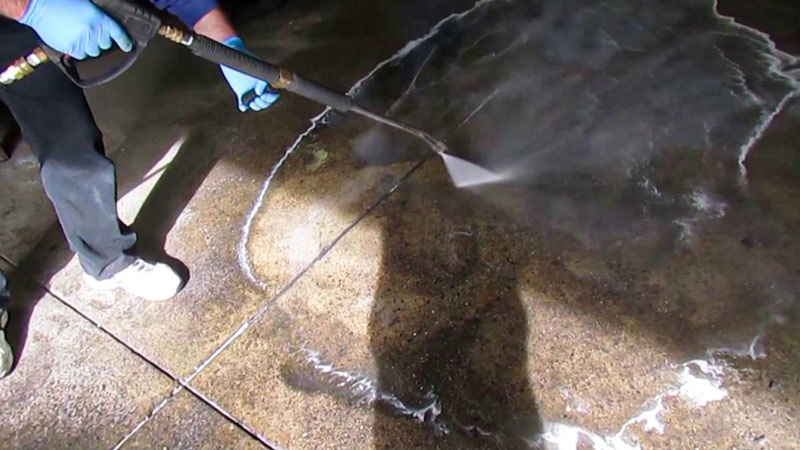
How Do You Get Spray Paint Overspray Off the Concrete Driveway?
Removing spray paint overspray from concrete can be a bit challenging, but with the right materials and techniques, you can effectively clean the surface.
Here’s a step-by-step guide on how to get spray paint overspray off concrete:
Collect the Materials Needed
Protective Gear:
- Gloves
- Safety glasses or goggles
Cleaning Agents:
- Acetone or nail polish remover (ensure it contains acetone)
- Paint thinner
- Methylene chloride-based paint stripper (if overspray is extensive)
- Mild dish soap
Scrubbing Tools:
- Stiff nylon or wire brush
- An old toothbrush or small scrub brush
Absorbent Materials:
- Paper towels or rags
Use Protective Gear
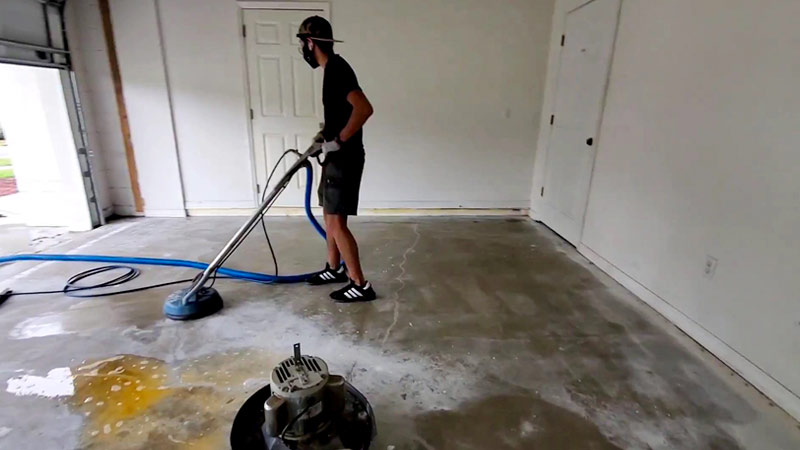
Prioritize your safety by wearing sturdy gloves that provide adequate protection against chemicals.
Additionally, don safety glasses or goggles to safeguard your eyes from potential splashes or fumes. Being diligent with protective gear sets a secure foundation for the cleaning process.
Test in a Small Area

Choose a small, inconspicuous section of the concrete surface to conduct a preliminary test. Apply a small amount of the selected cleaning solution and observe any reactions.
This precautionary measure ensures that the cleaning agent won’t adversely affect the appearance or structure of the concrete.
Scrape off Excess Paint
Utilize a plastic scraper or putty knife to delicately remove loose or excess paint without causing damage to the concrete.
Exercise patience and a gentle touch to avoid unintentional scratches, ensuring the cleanliness process starts without compromising the surface.
Apply Acetone or Paint Thinner
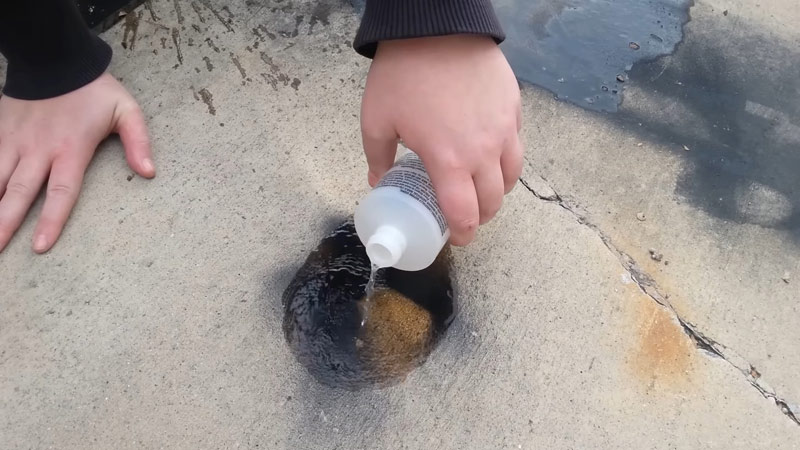
Immerse a clean cloth or sponge in either acetone or paint thinner and gently dab the overspray. Allow the solution to permeate the paint for several minutes without letting it dry.
This approach ensures that the cleaning agent effectively loosens the paint, making removing it easier.
Scrub with a Brush
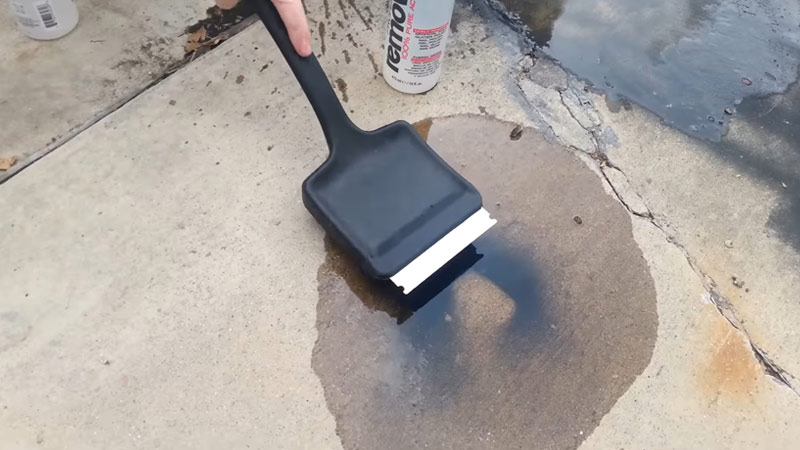
Engage a stiff nylon or wire brush to scrub the overspray in circular motions meticulously. Apply moderate pressure to dislodge the paint particles from the concrete surface.
An old toothbrush can serve as a precise tool for intricate or smaller areas, ensuring thorough cleaning in hard-to-reach places.
Repeat as Needed
Persistence pays off in this cleaning process. Continue repeating the steps until the overspray is completely eradicated.
For particularly stubborn paint, be patient and prepared to invest additional effort, knowing that each repetition brings you closer to a pristine concrete surface.
Rinse with Water
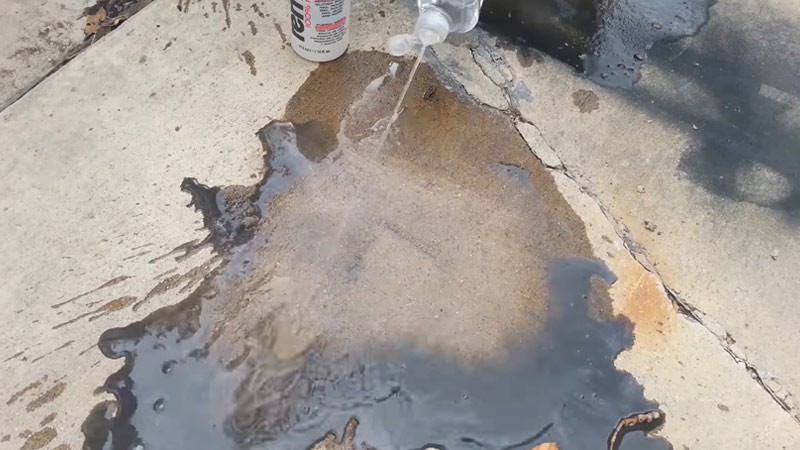
After successfully removing the overspray, it’s crucial to rinse the cleaned area thoroughly with clean water.
This step removes any lingering cleaning agents or paint residues, leaving behind a clean, residue-free surface.
Use Paint Stripper
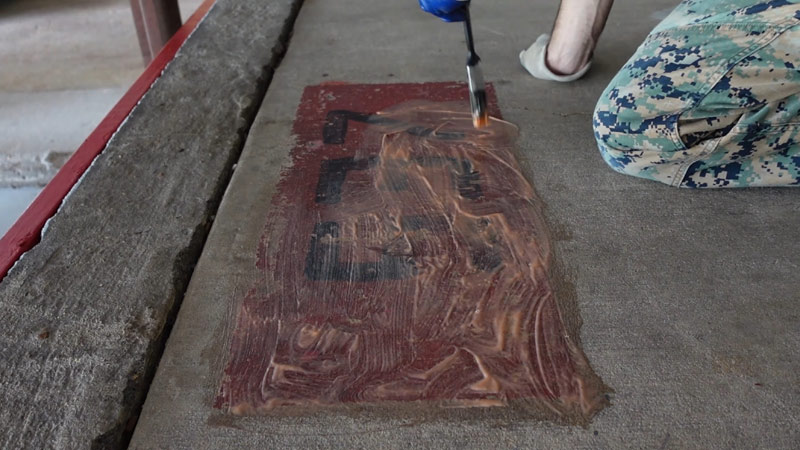
In cases where overspray is extensive or proves resistant to previous methods, a methylene chloride-based paint stripper may be necessary.
Adhere strictly to the manufacturer’s instructions to effectively and safely use the product. Exercise caution, as paint strippers can be potent and require careful handling.
Clean with Soapy Water
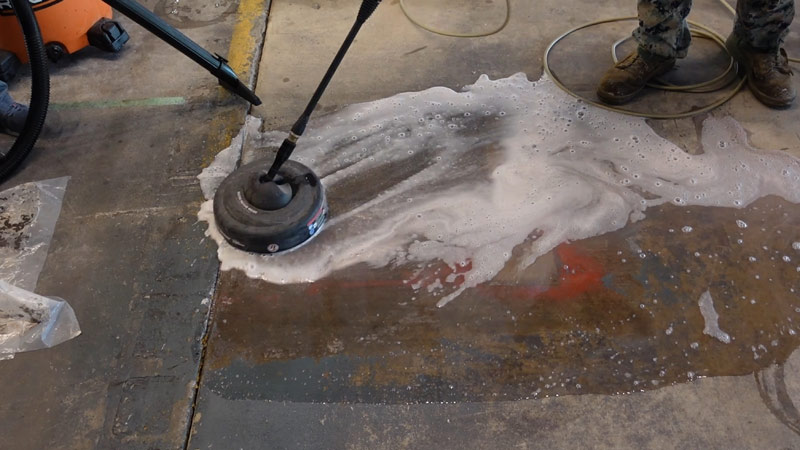
Maintain the treated area’s cleanliness and uniform appearance by mixing mild dish soap with water.
Apply the soapy solution using a sponge or brush to lift any remaining residues effectively. This final cleaning step contributes to the overall restoration of the concrete surface.
Dry the Area
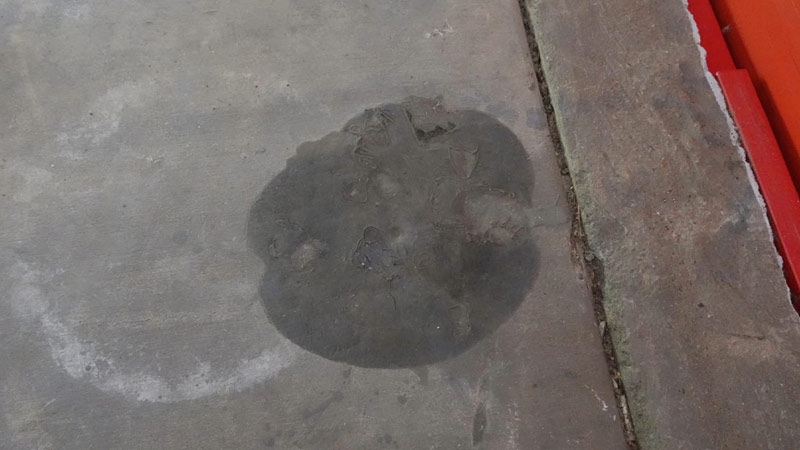
Conclude the cleaning process by allowing the treated area to air dry naturally or use a clean, dry cloth or paper towel to expedite the drying process.
A thoroughly dried surface ensures that no moisture or cleaning agents remain, leaving you with a clean and revitalized concrete space.
Removing Spray Paint From Concrete?
Removing spray paint from concrete demands a strategic and careful approach to prevent damage to the surface.
Follow these steps for effective removal:
Immediate Action
Swift action is paramount. Use a plastic scraper or putty knife to remove as much excess paint as possible delicately.
Immediate attention reduces the paint’s adherence to the concrete, making subsequent removal steps more effective.
Test a Small Area
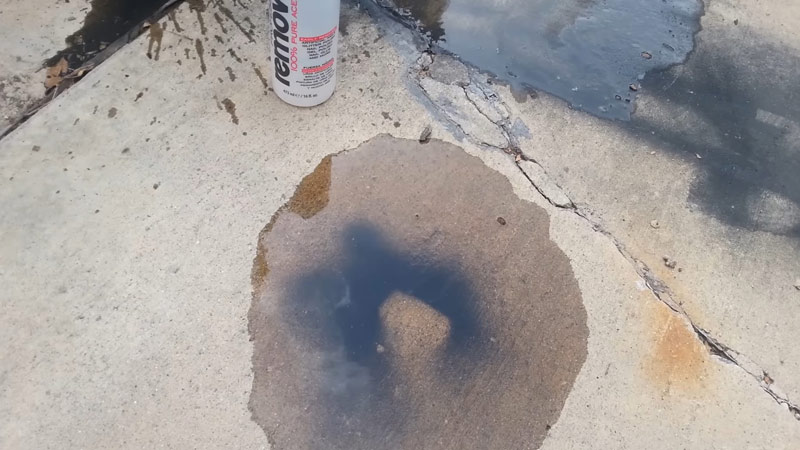
Before committing to a cleaning agent, conduct a meticulous test in an inconspicuous spot.
This precaution ensures the chosen solvent won’t harm the concrete. Confirming compatibility is crucial to prevent unintended damage to the surface.
Apply Cleaning Agent
Choose an appropriate cleaning agent based on the paint type and the concrete surface. Options include acetone, paint thinner, or commercial graffiti removers.
Apply the selected solvent to the painted area, allowing it to sit for a few minutes. This dwell time aids in breaking down and loosening the paint for easier removal.
Scrubbing
Employ a stiff brush or an old toothbrush for vigorous scrubbing in circular motions. Adjust the pressure to the concrete’s durability, ensuring effective paint removal without causing damage. Thorough scrubbing is key to dislodging and lifting the paint particles.
Repeat as Necessary
Persistence is key for stubborn or multiple layers of paint. Be prepared to repeat the cleaning process until the concrete is completely free of paint. Each iteration enhances the overall effectiveness, gradually restoring the surface.
Rinse and Clean
Thoroughly rinse the treated area with water to eliminate any remaining paint and cleaning residue.
Consider using a mild soap solution for a final clean, ensuring the removal of any lingering traces of the cleaning agent. This step contributes to a pristine appearance.
Sanding
If traces of paint persist, resort to light sanding with fine-grit sandpaper. Exercise a gentle touch to avoid damaging the concrete.
Sanding contributes to smoothing the surface, removing any lingering paint particles, and preparing the area for a uniform appearance.
Sealing (optional)
Optionally, enhance the concrete’s resilience by applying a concrete sealer after successful paint removal.
Follow the manufacturer’s guidelines for proper application, as a sealer helps protect the surface, preventing future paint penetration and maintaining the concrete’s durability.
FAQs
Will Wd-40 Remove Paint From Concrete?
Yes, WD-40 can be effective in removing paint from concrete surfaces.
Can I use household items to remove spray paint and overspray from concrete?
Substances like acetone, paint thinner, or dish soap can effectively remove spray paint overspray from concrete.
Can I use the same method to remove overspray from painted and unpainted concrete surfaces?
Yes, the general method applies to both painted and unpainted concrete, but test in an inconspicuous area first to ensure compatibility.
To Recap
Successfully removing spray paint overspray from concrete demands a combination of patience, careful testing, and appropriate tools.
One can effectively restore the concrete surface by following the systematic steps outlined, from immediate action and testing in a small area to the application of cleaning agents and thorough scrubbing.
Persistence is key, especially for stubborn paint. Including optional steps like using a paint stripper or applying a sealer further enhances the cleaning process.
With proper precautions, this guide empowers individuals to reclaim the pristine condition of the concrete, transforming an overspray predicament into a manageable and rewarding task while preserving the integrity of the surface.
Leave a Reply